Matador Network's Blog, page 575
September 23, 2021
This spot in the Dutch Caribbean will make for the best dive vacation you ever take
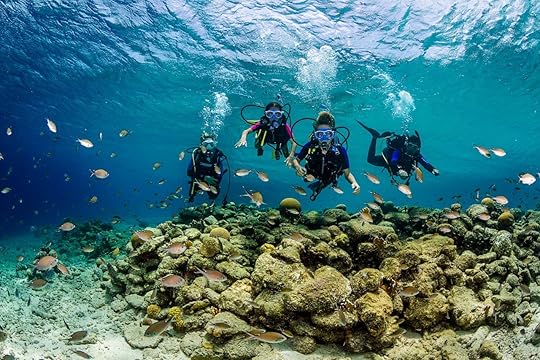
Some things in life just shouldn’t be DIY. Complex electrical work, for example, and dental surgery.
Some would say scuba diving falls into that category, too, what with the completely unnatural nature of submerging the human body under 50 feet of ocean for an hour at a time. But if you’re a certified diver with even a modicum of experience, there’s a place in the Caribbean where DIY diving is divine. A place where yellow stones off the highway each mark a new magical undersea world. When diving in Bonaire, all of this is easy to explore with nothing more than some gear, a C-card, and your diving buddy.

Photo: Tourism Corporation Bonaire
In many dive destinations, you fly to a far flung tropical island, book a dive trip with a local operator, and hope they show you the best sites. It typically involves a boat ride, a guide, or in some cases, a live-aboard vessel. And your experience is nearly always at the mercy of your dive company’s agenda and availability.
But in Bonaire, what you see and when you see it is entirely up to you. That’s because this Dutch Caribbean island smack between Aruba and Curaçao is designed as a shore divers heaven, with plainly marked dive sites, easy dives, and plenty of places to swap out your empty tanks for full ones.
Bonaire is ideally suited for avid divers for a few reasons. First, the reef is pretty easy to navigate, even for those who lose their way underwater easily.
“The reef is pretty much the same all around the island,” the manager at Dive Friends at the Delfins Beach Resort told me as I picked up gear for the week. “The bottom slopes down, then the reef slopes up, then it drops down again. And it’s never that deep, so if you can’t figure out where you are, just pop up to the top, look at the shore, and swim back.”

Photo: Tourism Corporation Bonaire
To his point, few dives go much deeper than 50 feet, and most can be experienced at 30 feet or less. Because the reef is also close to shore, you’ll never find yourself an unswimmable distance away.
Bonaire is also specifically designed with independent diving in mind. Dive Friends is among the largest operators on the island, with shops in major resorts like Delfins as well as other freestanding stores in town. Each shop is part of an island-wide tank refill program, where intrepid divers can roll up and trade in their empty tanks for full ones. The whole thing runs about $35 per day, and makes diving without a guide or boat trip simple.
Finally, Bonaire makes it easy to find its dive sites, as each one is marked by a yellow stone on the beach, located just off the main highway. So you can rent a car, load it up with gear and tanks, and traverse the island looking for the best places to dive without much difficulty. Because the dives are shallow, you won’t need long surface intervals, either. So if you like packing your days with as much diving as possible, Bonaire is where you want to be.
Hit the road and experience Bonaire, one gold rock at a time
Photo: Laura Grier
There’s really no right or wrong way to dive Bonaire. Most of the dives sit on the calmer west side of the island, and since visibility is pretty good here whenever you are able to go, you won’t need to hit them in any specific order. But if you’re struggling to figure out where to start, the Salt Pier is as good as anywhere.
Spotting the Salt Pier is pretty easy, as it sits adjacent to a skyline of 50-foot salt mounds. These are Bonaire’s famous salt pyramids that were mined from the island’s salt flats and shipped out from a large industrial pier near the island’s southern end. This pier, which is still fully operational, is also home to the Bonaire’s signature dive.
Starting out just south of the pier, swim out to its far southern end, then drop down about 17 to 20 feet. From there, you’ll swim through the pier’s pylons alongside eels, parrotfish, and the occasional squid. The quantity of marine life here is spectacular, too, as schools are drawn by the cool darkness cast by the pier’s shadows.
After exiting the water, you’ll likely come across another group parked near you, preparing to enter the water, just as I did.
“How’s the viz?” a middle-aged man with a New York accent asked as I unloaded my tank into my car.
“Great! You’re gonna love it!” I said. “Where you guys been today?”
“We were over at Red Slave,” he said. “Saw some turtles over there, I think they’re hanging around all day.”
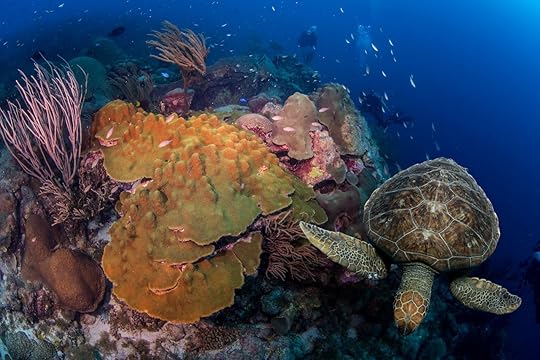
Photo: Tourism Corporation Bonaire
Such is the nature of divers’ camaraderie in Bonaire, similar to what you’d find from backpackers along the Appalachian trail, or hunters in late-fall Nebraska. If you’re diving Bonaire, you’re likely an enthusiast, and because of that you have an instant bond with almost anyone you meet. It’s kind of like a band-themed cruise, but instead of Heart you’re seeing actual barracuda.
From there, myself and the crew I was diving with took the New Yorker’s suggestion and headed to Red Slave, a dive site marked by the concrete huts set right on the shore that gets its name from the fact that the buildings once served as quarters for enslaved people who worked the eighteenth-century salt mines. There were turtles swimming there, along with an abundance of fish similar to what we saw under the Salt Pier.
About five minutes up the road, we stopped at the beach in front of Bonaire’s best wreck dive, the Hilma Hooker. The wreck is bookended by boat moorings less than 100 feet from shore. The dive area ranges from 60 to 100 feet, so it’s best done by more-experienced divers. It’s a fascinating look at how nature takes over once artificial objects are left to its mercy.
Other dive sites include 1,000 Steps, set just outside Washington Slagbaai National Park. While the trip down to the beach is not a full thousand steps long, the 64 stairs down are still a strenuous journey in full dive gear. The payoff is worth it, though, as you’ll finish on one of the most stunning beaches in the Caribbean. Inside the water, you’ll find towering pagodas of star coral near the boat moorings. Among them, sergeant majors, turtles, rays, and the occasional shark are common sightings. Not far from here you can also hit Bari Reef, where more than 300 species of fish have been sighted.
The shore diving capital of the world isn’t limited to shore diving, though. At Klein Bonaire, the small island just off the capital of Kralendijk, you’ll find the highest concentration of marine life in Bonaire. A short, pleasant boat ride takes you to sites like Forest and Monte’s Divi Tree, which boast thick schools of diverse fish and your best chance to spot sea horses.
Bonaire is one of the world’s most affordable dive destinations, too
Photo: Laura Grier
Perhaps the best thing about diving Bonaire is that it can be done (relatively) affordably. Though it’s important to know that the Dutch Caribbean should never be confused with a budget destination. Still, compared to other Caribbean islands where hotel rooms cost $300 a night and a 2-tank dive trip can cost just as much, Bonaire is a downright bargain.
I stayed at the Delfins Beach resort, a 4-star spot with a private beach and dive pier. Here, most rooms are full suites with kitchenettes and separate living rooms. Rates at the time of my visit started at less than $200 a night. Shore diving is free, and if you need to rent gear you can get a full set for $50 a day, or about $250 for a full week. Tanks are $35 a day, and offer air or Nitrox.
Meals weren’t outrageous either, with an average meal for two people on the island running about $80 to $100. Drinks were about the same – scoring a couple of cocktails for $10 wasn’t impossible, and even the island’s top cocktail bar, Tiki & Co., has few creations over $10 a drink.
Before you plan on the solo dive trip of a lifetime, remember diving is never a solo sport. If you’re planning to go by yourself, you’ll either need to meet people to dive with or bring a guide. And this kind of unsupervised diving odyssey should only be undertaken by experienced, certified divers, who know what they’re doing and feel comfortable going down 30 to 40 feet.
Assuming all that holds, Bonaire is going to be the best dive vacation you ever take. From the thousands of fish, to fantastic visibility, to DIY diving at reasonable prices, it’s hands down the best Caribbean island for the avid diver. And even for those who aren’t, it’s a gem where the greatest treasures lie underwater.
The post This spot in the Dutch Caribbean will make for the best dive vacation you ever take appeared first on Matador Network.
Road trip guide to Sun Valley, Idaho
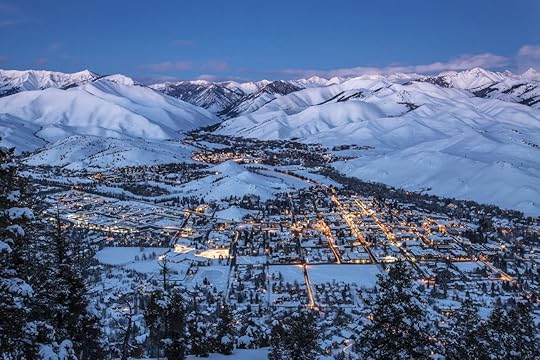
In the same wild, mountain-carved territory as Yellowstone, Grand Teton, and Glacier National Parks — with perhaps even more off-grid adventure opportunities and beautiful backroads to explore — Sun Valley, Idaho, is the ultimate pit stop on any Western road trip. Though how you experience it is completely up to you.
Between free camping and luxurious hotels, ski resorts and mountain lakes, small-town charm and big-city culture, there’s no wrong way to go. Just make sure you stop for a bit — here’s why.
Five-hour radius: Wilderness in every direction
Photo: Ray J.Gadd Photography / Visit Sun Valley
A hard-to-believe nature hub, Sun Valley is surrounded by vast wilderness areas, unbelievable ski resorts, geological wonders, mountain lakes, and historical sites. Within a five-hour drive, you’ll find numerous other world-class mountain towns like Jackson Hole, Park City, McCall, and Driggs, along with the smaller mom-and-pop ski areas such as Soldier Mountain, Bogus Basin, Pomerelle, and Lost Trail. Some of these are also on the Epic Pass like Sun Valley, which should make this part of the country a no-brainer for your next winter-season road trip.
The otherworldly volcanic landscape of Craters of the Moon National Monument and Preserve is just a couple hours away; so too are the surprisingly large inland sand dunes of Idaho’s Bruneau Sand Dunes State Park. If rivers are what you’re after, head north towards the Salmon, Big Lost, South Fork of the Boise, or the Payette River system, all of which are inside a half-day’s drive. And quality campgrounds can be found in every direction, with the Sawtooth National Recreation Area and Trail Creek campgrounds offering hook-ups and bathroom facilities.
Looking for uncharted wilderness? The largest roadless area in the Lower 48, the Frank Church-River of No Return Wilderness, is just out Sun Valley’s backdoor. So are other incredible wilderness and recreation areas in the Sawtooth, Pioneer, and Boulder Mountains. Lakes? The jaw-dropping vista from Redfish Lake’s main beach is always a crowd-pleaser, as is McCall’s Payette Lake and Jackson Hole’s Jenny Lake. Spoiled for choice doesn’t even begin to cover it.
Five-minute radius: Exploring in town
Photo: Ray J.Gadd Photography / Visit Sun Valley
Highway 75 turns into Main Street in Ketchum, where Warm Springs Road and Sun Valley Road merge at one of three stoplights in town. The Pioneer Saloon is a few steps from this intersection — Sturtevants is too, with its convenient rental fleet and full-service bike/ski shop. Sun Valley Resort’s, pools, spas, restaurants, and four-season recreation options are about a mile down the road.
Despite its size — and lack of stoplights — the town of Ketchum is packed with shops, restaurants, bars, things to do, and art and culture opportunities. Try the wings at Sawtooth Brewery & Tap Room and burgers at the iconic Grumpy’s, or nab delicious take-out from Rickshaw — the Szechuan beans with locally raised Lava Lake Lamb is a favorite.
The swimming hole behind the Ketchum Skate Park is a great place to cool off in the summer; catch a rainbow trout here come fall and winter. And the wide-open, dog-friendly, grassy fields of Atkinson’s Park are perfect for stretching all six of your legs, regardless of season. (Just please clean up after your pet!)
Looking for history? Ernest Hemingway’s favorite place to fish, Silver Creek — with its legendary and hard-to-catch brown trout — is close by, as is the house where he was living when he died. You can pay your respects at the Hemingway Memorial, just east of the Sun Valley Lodge, or at the Ketchum Cemetery, the site of his grave.
There’s also the Ernest Hemingway Festival every September, one of many world-class events to grace Sun Valley throughout the year. Keep an eye on the local calendar for upcoming happenings including concerts, gallery openings, stage performances, and the famous Basque Trailing of the Sheep Festival.
Getting there
Photo: Hallie Macpherson / Visit Sun Valley
Driving into Sun Valley for the first time is unforgettable no matter which direction you’re coming from. The north? You’ve already passed through spectacular wilderness areas, along deep river canyons, through the Sawtooth Valley, and by the headwaters of the mighty Salmon River — one of the last great free-flowing wilderness river systems in the country. The experience of cresting Galena Summit and heading down into Sun Valley is a sweet one.
Coming from the east? Well then, you’ve driven right over the jaw-dropping and white-knuckle-inducing Trail Creek Summit. The road is long and dirt most of the way, rattling right through the divide between the Pioneer and Boulder Mountains before joining the meandering Trail Creek. Eventually, the dirt turns to pavement and vivid views of Bald Mountain and Sun Valley Resort come into frame. The first building you’ll see is the stunning Sun Valley Resort Clubhouse, and it always feels like arriving, no matter how many times you’ve done the drive.
If you’re coming from the south — which most people do — high-desert prairies and large swaths of flat farmland run right up to the mouth of the Wood River Valley. If you catch yourself wondering just where the heck the mountains are, you wouldn’t be the first. Until about 30 miles south of Sun Valley, it’s mostly wide-open pastures and fields of alfalfa. But the valley slowly begins to narrow as you head northward, passing through the towns of Bellevue and Hailey; as you round the turn and cross the Big Wood River one last time, just south of Ketchum and Sun Valley, you finally set eyes on the mountains. It’s always a bit surprising — and inspiring — even for longtime locals. Bald Mountain’s famous ski-resort bowl runs rise quickly to the west, and layer upon layer of peaks unfold to the north.
Sun Valley truly is the gateway to Idaho’s vast and storied wilderness. Don’t miss it on your road tour of the great American West. 
The post Sun Valley pit stop: A road tripper’s guide to Sun Valley, ID appeared first on Matador Network.
Could virtual windows in airplane cabins be the future of aviation?

For many of us, the window seat is the only way to fly. Impressive views during landing from the cabin can set the tone for a trip, offering an initial glimpse of the destination. But aviation innovators Rosen Aviation, along with KiPcreating and Sky-Style, state that our flying experience could be elevated with windowless cabins on planes.
Their design called the Maverick Project has completely reimagined airplane cabins taking the traditional build and replacing passenger windows with virtual windows.
CNN reports Lee Clark, Rosen Aviation’s senior VP for strategy, stated the company is introducing “tomorrow’s technology” in a world already evolving on the ground with smart homes and technologically advanced cars. The goal is to create a futuristic experience with touchless controls and holograms.
The technology will be rolled out in private jets but could make its way to commercial first and business class in the future. Rosen Aviation wants the commercial version to premiere at the Airport Interiors Expo, in Hamberg, Germany in 2022.
“It seems the virtual skylights and virtual windows are among the hottest of topics because they bring in that ability to incorporate augmented reality, some artificial intelligence, and they transform that little porthole window we’ve been living with for decades into something more immersive,” Clark said.
The virtual windows could serve as a part of in-flight entertainment, offering information about the places it’s flying over or just creating a palatable ambiance.
“The critical piece is it’s about the passenger experience, it’s not about the technology,” Clark went on to say. “One of the elements that is most critical for Rosen is the integration of technology seamlessly, that it’s almost invisible technology.”
Some are concerned about the claustrophobic effects of windowless cabins on planes, but Rosen said the company has found the feedback to be overall positive. In the meantime, the Maverick Project still has to make sure a windowless design complies with US Federal Aviation Administration and International Air Transport Association regulations, so it may take a while before we see this at a commercial level. 
The post Could virtual windows in airplane cabins be the future of aviation? appeared first on Matador Network.
SpaceX capsule successfully landed with the first civilian crew to orbit Earth

Space tourism is becoming more actualized in 2021. With billionaires like Richard Branson showing off his trip on the Virgin Galactic in July, shortly followed by Jeff Bezos’ flight in the Blue Origin’s capsule, 2021 has been historic. And on Saturday, Elon Musk’s SpaceX successfully landed, touching down off the coast of Florida at 7:00 PM EDT and making history as the first civilian crew to orbit Earth.
Splashdown! Welcome back to planet Earth, @Inspiration4x! pic.twitter.com/94yLjMBqWt
— SpaceX (@SpaceX) September 18, 2021
The SpaceX flight has broken another barrier for space tourists, sending four civilians further than any human has flown from Earth since NASA’s Apollo moon program ended in 1972. The group orbited Earth in the Dragon capsule (dubbed Resilience) at an altitude of 357 miles (575km) for three days, traveling higher than the International Space Station and 22 times the speed of sound, according to Reuters.
“Welcome to the second space age,” Todd “Leif” Ericson, mission director for the Inspiration4 venture, told reporters on a conference call after the crew returned.
Returning to Earth sent the capsule through the atmosphere, reaching 3,500 degrees Fahrenheit. The astronauts’ flight suits had built-in ventilation systems to keep them cool if the cabin got too warm. The capsule’s speed slowed to around 15 miles per hour when it hit the ocean, according to Reuters.
Jared Isaacman, 38, was titled “commander” for this flight and is now the third billionaire to make it to space. Isaacman is joined by Hayley Arceneaux, 29, “chief medical officer,” a childhood cancer survivor and now a physician assistant at St Jude Children’s Research Hospital. Isaacman has pledged $100 million and matched the money in donations through Inspiration4. She is now the youngest person ever to orbit Earth.
“Specialist” Chris Sembroski, 42, and retired astronaut candidate and “pilot” Sian Proctor, 51, were the winners of the SpaceX sweepstakes that promised to send two lucky winners to space in February of this year. But the truth is these titles don’t mean much since the Inspiration4 crew onboard played no part in flying the aircraft. The ground crew operated the mission from Earth. Tickets for the entire crew were paid for by Issacman, which were estimated to be $55 million a head, according to Insider.
Once the crew arrived, they were taken for another round of medical check-ups and then flown back to Cape Canaveral via helicopter to reunite with family and friends. 
The post SpaceX capsule successfully landed with the first civilian crew to orbit Earth appeared first on Matador Network.
The ultimate fall road trip gear guide

The key to a successful road trip wardrobe is comfort and versatility — you want to be ready for hiking in the morning and dining out in the evening. Well, fall is here, and Matador Network is ready to keep you cozy and kitted out with road trip essentials during your leaf peeping adventures. Instagram can make road trips look glamorous, but it’s no secret that traveling for hours may not be all it’s cracked up to be. That’s why grabbing the road trip essentials is just that, essential! Whether you don flannels or fleece, this fall road trip gear guide contains Matador Network’s recommendations for what to wear when on the road during golden season.
We hope you love the road trip essentials we recommend! Just so you know, Matador may collect a small commission from the links on this page if you decide to book a stay. Listed prices are accurate as of the time of publication. See our full Advertiser Disclosure here.
Patagonia R1 Fleece Pullover
Photo: Patagonia/REI
Midlayers are perfect for fall, and we’ve fallen for the Patagonia R1 Pullover. Road trips go hand-in-hand with exploring, and that can lead to varying degrees of body temperature. We support a proper layering system for this very reason, and the R1 is the ideal fall weather adventure companion. Lightweight but warm, this versatile, sweat-wicking layer is built from Polartec Power Grid fabric with HeiQ Fresh durable odor control. This makes the R1 the answer to keeping you comfortable while adventuring on the road because after a day of exploring, you’ll still smell fresh when dinner comes around.
Price: $129.00
Cotopaxi Abrazo Hooded Full-Zip Fleece Jacket
Photo: Cotopaxi/REI
We emphasized creating a versatile layering system, and if you’re heading to chillier weather on your fall road trip, you want to layer up with the Cotopaxi Abrazo Hooded Full-Zip Fleece Jacket. A full-zip ensures you can properly ventilate when on the move, and elastic bindings allow you to create the perfect fit at the collar, cuffs, and hood. Not only is it beautifully crafted, but it is made from 100% recycled fabric.
Price: $125
Fjällräven Kanken Hip Pack
Photo: Fjällräven/REI
Style isn’t the only reason we’re including the Fjällräven Kanken Hip Pack. Keeping track of sunglasses, keys, money, and your phone is a lot harder than it sounds (shout out to the black hole between your seat and center console). While keeping your items organized with a main compartment, inside sleeve, key clip, and two exterior zipper pockets, it doesn’t matter if you wear the Kanken around your hips or torso — it’s sure to keep everything in one place and allow for easy access to the essentials.
Price: $50.00
Patagonia Nine Trails Shorts
Photo: Patagonia/REI
We know some road trippers are out there to hike and run through golden aspen groves— that’s why we’ve included the Patagonia Nine Trails Shorts on this list. While boasting durable, water-repellent fabric, these shorts are also ultra-lightweight and come with a center-back zipper pocket (talk about versatile). Not only that, but the Nine Trails are Fair Trade Certified, meaning that they were made in a facility that promotes safe working conditions and sustainable livelihoods. Talk about win-win.
Price: $65.00
Indyeva Naoko
Photo: NAOKO
It’s best to have versatile layers when hitting the road in fall, and the Indyeva NAOKO Thermal Hoodie is just that. Perfect for layering over a flannel or under a puffy, the Indyeva NAOKO is a full-zip hoodie made from fast drying Thermal Pro Polartec (if you’re new to adventures, quick drying layers are a must to ward of the chilly breezes and smell that sweat can bring). Whether you’re throwing it over a pair of hiking leggings or designer jeans, the NAOKO provides both form and function— a sleek fixed hood and fabric make the NAOKO city chic and trail ready.
Price: $200.00
Orvis Classic Tipped Wool Sweater
Photo: Orvis
Ever heard of sweater weather? That’s why the Classic Tipped Wool Sweater from Orvis was born— this sweater is made from recycled plastics and oyster shells derived from the food industry. It sports some of our favorite road trip features— while it is moisture wicking to reduce sweat and odor, the Classic Tipped looks like it could be found in the ocean front restaurants of Cape Cod and feels like something you want to snuggle up in for a long drive. Pro-tip: our testers have noted that the Classic Tipped Wool Sweater from Orvis can be pulled comfortably around hands to keep you warm and prevent bunching under layers. We repeat, this sweater does not ride up!
Price: $89.00 — $149.00
Fjällräven Canada Shirt
Photo: Fjällräven/REI
Fall is synonymous with flannels, but not all flannels are created equal. If you’re looking for a thick flannel that offers flexibility, then look no further. The Fjällräven Canada Shirt features a wool blend to provide warmth and durability while offering that soft, cozy material we all crave in fall. Whether you see it as a heavy shirt or a light jacket, the Fjällräven Canada Shirt is perfect for hiking through crisp autumn air in the mountains or dining on salmon in a seaside town.
Price: $150.00
Houdini Wadi Pants
Photo: Houdini
Leggings aren’t the answer for everyone, and that’s why we have to share some of our favorite outdoor adventure pants. Though the Houdini Wadi Pants are marketed as a lightweight pant for warmer weather, our gear testers have noted they loved these for fall weather road trips. Stitched from a fabric named “Liquid Rock,” the Wadi is extremely durable while having a soft, dry touch on the skin. Even more, their relaxed fit and quick-drying nature provides the versatility we look for when scouring brands for the best road trip clothing. The Houdini Wadi Pants are a hidden gem — and we’re here to make sure you know about them.
Price: $130.00
Cotopaxi Fuego Down Vest
Photo: Cotopaxi/REI
If there’s one thing we know, it’s that fall weather can be unpredictable. That’s why we recommend having the Cotopaxi Fuego Vest in your trunk of road trip essentials. This water repellant down hoodie is perfect for keeping your core warm when the weather changes. It’s slim enough to layer under a raincoat but is also designed to fit comfortably over a flannel, all while providing your arms more freedom of movement. With a water-resistant stuff sack, this 800-fill-power goose down vest feels good on the trails and looks good around town. New fall-themed colors are now available too, which truly makes it a perfect fall road trip layer.
Price: $150.00
Darn Tough Hiker Micro Crew Sock
Photo: Darn Tough/REI
Road trips are filled with unexpected adventures — small town coffee shops, hikes through sweet-smelling pines, and cozying up in the passenger seat while wild landscapes pass by. That’s why you need a sock that is versatile, comfortable, and ready for anything. The Darn Tough Hiker Micro Crew socks are perfect for any road trip because they are crafted from merino wool, a fabric known to wick away moisture while regulating temperature. In other words, these socks will minimize the chances of stinky feet while slipping your toes into both sandals and hiking boots.
Price: $24.00
Forsake Lucie Slip Shoe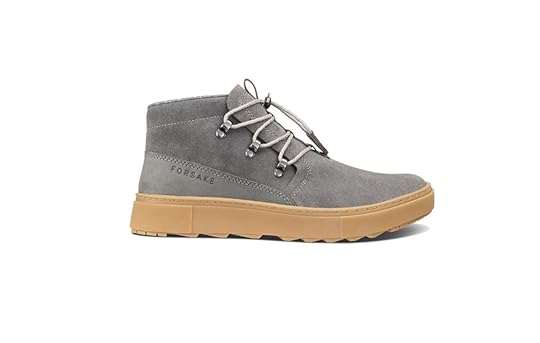
Photo: Forsake/REI
We’ve all slipped off our shoes to get a little more comfortable in the car, and on a road trip, freeing your tired feet is inevitable. The Forsake Lucie Slip Shoe make it easy to slip them on and off for maximum comfort, wherever you are. Elastic toggle laces and slip-on gussets mean you can go from socked in the car to walking along a sunset viewpoint fast — so you’ll never miss a view. Water-resistant, breathable, and moisture wicking— just a few ways to describe the stylish but comfortable Lucie Slips.
Price: $119.95
COSTA Pescador Polarized Sunglasses
Photo: COSTA/REI
A good pair of sunglasses are crucial for keeping your eyes happy and healthy and are a no-brainer when thinking of road trip essentials. And why not choose a pair that do good for the environment, too? The COSTA Pescador Polarized Sunglasses look good on trails or in town, and they are made from 100% recycled fishing nets. They’re also equipped with polarized lenses to decrease eye strain, mineral glass scratch resistant lenses, and PLUSfoam recyclable nose and temple pads to keep your face cushioned. Not only that, but COSTA lets you add prescription lenses to your frames. A win for you and a win for the ocean.
Price: $219.00
Outdoor Research Flurry Sensor Gloves
Photo: Outdoor Research/REI
Too often to do we see fall hikers and city adventurers with hands crammed in pockets thanks to unexpected cold. Our fingers are often one of our first body parts to get chilly— but for some reason, they’re the last thing we remember to cover. We would be remiss not to include a lightweight glove, and the Outdoor Research Flurry Sensor Gloves fit the bill. Breathable Alpin-wool offers warmth and dries quickly while touch-screen compatible fingertips enhance finger dexterity. Do your hands a favor and get these, they will thank you.
Price: $40.00
Rumpl NanoLoft Puffy Travel Blanket- Pyro Tri-Fade
Photo: Rumpl/REI
Whether you’re cozying up in the car for hours of driving, sitting in Acadia National Park at sunset, or munching a sandwich looking out over Yosemite Valley, comfort is key. The Rumpl NanoLoft Puffy Travel Blanket is water-resistant and durable. The NanoLofts stuff sack means it won’t take up much room in your backpack or backseat, and it can be washed easily so you can keep taking it on adventures. This blanket is sure to keep you bundled in the fall weather while making your road trip just a little bit more snuggled. You can’t skip this on your list of road trip essentials and it also makes an excellent gift for the adventurer in your life.
Price: $99.00
Buff CoolNet UV+ Multifunctional Headware
Photo: Buff/REI
Buffs are one of the most versatile accessories on the market — they can be worn in any season and in a variety of ways. The CoolNet UV+ Buff offers UPF 50 sun protection, and enables you to quickly add or take away warmth. Not only is the CoolNet lightweight, but it’s easily packable and comes in colors ranging from solid to colorful patterns. Perfect for fall weather due to their quick-drying capabilities, we recommend always having a Buff in your vehicle — not just during road trips. 
Price: $24.00
More like thisTechnology + GearWe tested the new GoPro HERO10 Black, and it’ll take your travel shots to the next levelThe post The ultimate fall road trip gear guide appeared first on Matador Network.
September 22, 2021
This tiny robot at Seattle Airport will bring you food to your gate
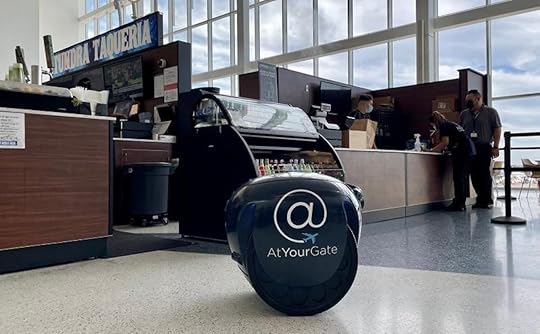
At Seattle-Tacoma Airport, visitors will begin to see tiny robots scooting around the airport terminals. But there’s no need to be concerned, they are here to help to deliver food via OrderSEA to passengers while they wait at their departure gate.
Seattle-Tacoma Airport introduced a new mobile ordering service OrderSEA, which links travelers to 16 airport restaurants that they can order from when they are crunched for time — or just want to take a load off.
The service also includes gate delivery from a robot named Gita. Gita can carry up to 40 pounds of food and deliver it to where it needs to be with a $2.99 fee.
OrderSEA’s service provides food from restaurants like McDonald’s, Trail Head BBQ Bar, Dungeness Seafood House, and more options. Once you place your order online, the app will tell you how long it will take, and if you are in a rush, you can include the Gita robot service.
“Technology can make your airport experience more flexible and less stressful,” said Port of Seattle Commissioner Sam Cho in a press release. “OrderSEA means travelers can skip standing in a crowded line, the least fun and most stressful part of any trip.”
Since the soft launch earlier this summer, the OrderSEA has had over 1,200 orders and 500 gate deliveries. For now, the robot will be accompanied by someone, but as demand grows, the robots will soon be wheeling around unaccompanied. 
The post This tiny robot at Seattle Airport will bring you food to your gate appeared first on Matador Network.
4 incredible resorts in Fort Myers

Along the white sands of The Beaches of Fort Myers & Sanibel, there’s endless time for seashell collecting, sunbathing, Gulf-wave splashing, and floating in the pool. If you did nothing else on your trip to Southwest Florida, that wouldn’t be too shabby.
But stay at the right resort, and you can upgrade your itinerary with high-energy activities, fine dining, and maybe even the chance to pick up a new hobby or two. From candlelit dinners on the sand to sailing school, here’s where to stay — and play — on The Beaches of Fort Myers & Sanibel.
South Seas Island Resort, Captiva Island
Photo: South Seas Island Resort
How many resorts can you think of that are set on a 330-acre nature preserve? How many also have two and a half miles of private beachfront for guests to enjoy?
That sure narrows down the list — mainly to Captiva Island’s South Seas Island Resort, where you could opt for a hotel suite, a one-to-three-bedroom villa, or a beach home. And with the resort’s nature-forward setup, guests can take a beachcombing class with a marine-science educator, grab a kayak and paddle toward that pod of dolphins spotted from shore, or admire the herons strolling by while holding a pose during Ambu Yoga on the sand. At South Seas, it’s all about relaxing into nature’s quiet thrills.
To work on your game, enroll in a private tennis or pickleball lesson led by a professional at the Blackwood Tennis Academy, or play a round of golf on a course named one of the “Top Five Short Courses” in the world. And how’s this for a unique vacation opportunity: With the onsite Offshore Sailing School, guests can book lessons from certified sailing instructors, no sailing knowledge or experience required. You’ll learn to sail across five days, going home with far more than a souvenir.
Pink Shell Beach Resort & Marina, Fort Myers Beach
Photo: Pink Shell Beach Resort & Marina
The beachfront Pink Shell Beach Resort & Marina knows lounging on its stretch of beautiful white sand can be hypnotizing — but if you want to break the spell, start the day with a complimentary breakfast at Jack’s Restaurant and then head to the beach for a volleyball game or a float on a stand-up paddleboard or kayak. Of course, you could go bigger and rent a paddleboat or sailboat, too, hitting those teal waves right outside your front door for a truly unforgettable afternoon.
Another unique opportunity for guests is Pink Shell’s 90-minute Dolphin Adventure Tour, where you’ll get the chance to zoom on a WaveRunner across Estero Bay and the Gulf of Mexico. Make sure to throttle down from time to time to soak in that fresh Gulf breeze and see if you can spot dolphins, manatees, and other sea life in their native habitat. (Skilled guides are available to lead a tour, if you need a pointer or two.)
At the end of your fast-paced day, you can look forward to kicking back at one of the resort’s three Gulf-front pools, with a cocktail at the beach bar, or at your spacious beachfront room or villa. Or, if visiting for a special occasion, there’s nothing quite as romantic as a candlelit dinner on the beach, complete with four courses, white-glove service, and a curated wine list. It’s Pink Shell’s specialty.
Sundial Beach Resort & Spa, Sanibel Island
Photo: Sundial Beach Resort & Spa
Sundial Beach Resort & Spa unfurls on a beautiful mile of pristine white sand. You’ll get stellar views of those Gulf waters from the Sea Breeze Café, one of the most scenic waterfront dining spots in Southwest Florida, and from your own one-, two-, or three-bedroom suite. In other words, when you want an R&R kind of day to the tune of the waves, you’ve got it made anywhere at Sundial. Sunbathing, unplugging, strolling on the beach, swimming in warm Gulf waters — this spot exudes an ambiance of romance and calm, where phones get turned off, conversation ignited, and balance restored.
But the resort is also a fantastic home base for exploring Sanibel Island. Guests can sign up for seasonal guided beach walks (in partnership with Sanibel Sea School), take complimentary bicycles for a ride, or turn things up a notch by renting a gas-powered golf cart for the day — they’re street-legal and can seat up to six! Whether it’s by bike or golf cart, scope out the Sanibel Island Lighthouse, the Sanibel Historical Museum and Village, and the Islander Trading Post, an eclectic antique store. And on Sundays, swing by the Sanibel Island Farmers Market for fresh fruit and vegetables, homemade crafts, and baked goods to take back to your suite’s kitchen.
Another thing that sets this property apart: its connection to Southwest Florida history. Bailey’s Marketplace, a family-owned grocery store that dates back to 1899, has an outpost at Sundial. Historic yet tech-savvy, the marketplace offers grocery delivery right to your suite without a delivery fee. (You can even order groceries from your phone.) That means more time for admiring those views from your suite while you cook up a gourmet dinner!
DiamondHead Beach Resort, Fort Myers Beach
Photo: DiamondHead Beach Resort
At DiamondHead Beach Resort, you could be tempted to spend a lot of time in your home-away-from-home digs. The resort’s Gulf-front accommodations include 124 generous one-bedroom suites with private balconies, and select suites feature a kitchenette and cozy living room. You could while away weeks simply watching the sunset, reconnecting and slowing down, and devoting hours to enjoying your morning coffee in the ocean breeze. Upping the feel-good factor are the resort’s two restaurants (one of which offers seating right on the sand!) and the sparkling beachfront pool deck, complete with beverage service.
It’s not all about kicking back and relaxing, though. Odds are you’ll be drawn to the parasailing, jet-skiing, or other high-octane water activities found in this part of Fort Myers Beach. Get the blood pumping and the sweat pouring as you earn your dip into the refreshing Gulf waters. Or, for a more relaxing workout, hit the local paths on one of the resort’s bikes.
But heck, don’t stop there. Having DiamondHead as your home base makes it easy to explore Fort Myers Beach and beyond, especially considering it’s on the local trolley route. Other stops include Lovers Key State Park and Times Square, a lively plaza with restaurants, shops, live music, as well as a fishing pier where you can cast a line and try your luck at landing the night’s dinner.
In other words, the right resort can certainly take you places on The Beaches of Fort Myers & Sanibel. Which one will you choose? 
The post 4 incredible places to stay on The Beaches of Fort Myers & Sanibel appeared first on Matador Network.
This new cookbook spotlights China’s underappreciated baking traditions

In a funny way, America’s quintessential cookie, the chocolate chip, inspired Kristina Cho to write a cookbook about Chinese baked goods. “There’s a billion recipes for chocolate chip cookies out there,” she tells me over the phone, explaining the motivation behind Mooncakes and Milk Bread: Sweet and Savory Recipes Inspired by Chinese Bakeries. “But you’d be hard-pressed to find things like a mooncake or red bean swirl bun.”
Yet Cho, author of the popular food blog Eat Cho Food, knew the demand for these foods was there. When she first started posting recipes for Chinese-inspired buns a few years ago, the response was overwhelmingly positive. Readers raved about her tea-infused shortbread and hot dog flower buns, which Cho describes as “pure childhood for me and a lot of people.” Many commenters thanked her for reconnecting them with the foods they grew up eating.
Nostalgia was a driving force behind the cookbook. Growing up in Cleveland, Ohio, Cho remembers thumbing through tins of Cantonese-style mooncakes at her local Chinese grocery in search of the most interesting flavors, particularly around the Mid-Autumn Festival, a holiday honoring the fall harvest. Dense and round, symbolizing togetherness, mooncakes are a festival staple that’s meant to be cut into wedges and shared with family. Chinese hot dog buns, on the other hand, always make Cho think of Hong Kong and her frequent visits there as a child.
The sentimentality that her recipes evoke also resonates with readers who are unfamiliar with traditional Chinese baked goods. Those who’ve never had a hot dog flower bun probably have memories of eating pigs in a blanket, Cho posits, or American-style hot dogs. “As they look through the cookbook, [readers] will start to learn that there are a lot more similarities between Chinese baking and Western baking than there are differences,” she says.
Colonialism explains many of these similarities. Beyond baked goods like Chinese-style egg tarts, which, Cho remarks, look like something you’d see on the Great British Baking Show, the very concept of the Chinese bakery was influenced by imperialism. What’s now seen as a traditional Chinese bakery in the West was popularized in Hong Kong in the mid-20th century, roughly 100 years after the island was claimed as a British colony in 1841. When asked about them, Cho’s Hong Kong-born father refers to these bakeries as “Western-style” because “they feel very different in the context of normal Chinese food.”
But according to Cho, this also makes “the Chinese style baking so uniquely its own.” Sweet and savory ingredients like tropical fruit, green onions, sesame seeds, and lotus paste, a classic filling for mooncakes, mingle with custard and flaky pastry dough. Techniques vary too: Alongside fresh-from-the-oven baked goods, many Chinese bakery items are steamed or fried owing to the fact that Chinese households did not traditionally have ovens.
Mooncakes and Milk Bread embraces Chinese bakeries as a cultural cross-section, transporting readers not only to Hong Kong and mainland China but also America’s Chinatowns, from Cleveland to San Francisco, New York City, and beyond. It’s a cookbook that holds classic and contemporary recipes in equal regard. The proof is right there in the title.
“I think mooncakes and milk bread speaks to the whimsy and creativeness that’s in a lot of Chinese bakeries,” says Cho. “And I love the contrast between the two styles of baked goods,” with mooncakes being more “old-school” and milk bread having “a life of its own” right now.
Whether readers are seduced by the recipes that took generations to arrive in Cho’s hands or the recipes that are driven by her own creativity does not much matter to Cho. Her hope for the cookbook is simple: expose more people to the styles and perspectives behind Chinese baked goods to give more Chinese bakeries the chance to spring up in new places.
In the spirit of spreading awareness about China’s underappreciated baking traditions, here are seven essential Chinese bakery orders everyone should know.

Photo: Eat Cho Food
We hope you love this book we recommend! Just so you know, Matador may collect a small commission from the link on this page if you decide to purchase. See our full Advertiser Disclosure here.
Mooncakes
Photo: VN STOCK/Shutterstock
Mooncakes are dense, round Chinese bakery items associated with East Asia’s Mid-Autumn Festival, which is observed on the 15th day of the eighth lunar month when the moon is said to be at its fullest. Styles vary by region, but red bean paste and lotus seed paste are traditional fillings. Salted egg yolks might also be added to the center to represent the full moon. Cantonese-style mooncakes like the ones Cho grew up eating are most common in the West. They have a chewy red-gold crust, opposite the flaky or crumbly crusts developed in certain parts of China, and typically have Chinese characters imprinted on the top.
Milk bread
Photo: chaechaebyv/Shutterstock
Popularized in 20th-century Japan, milk bread is an enriched bread and Chinese bakery staple that begins with a roux of flour and milk known as tangzhong. (Enriched doughs incorporate ingredients such as milk, eggs, and butter into their flour, water, and yeast mixtures to create a higher fat content.) The resulting dough can be formed into pillowy loaves, shaped into soft buns, or used as the base recipe for any number of Chinese baked goods.
Dan tat
Photo: MosayMay/Shutterstock
According to Cho, Chinese bakeries sell three types of egg tarts. Cantonese-style egg tarts, which were influenced by the British and have either a shortcrust or puff pastry base, and Macau-style egg tarts, or po dat, which can be traced back to Portuguese colonization and have a laminated base, caramelized filling, and hint of cinnamon. Growing up, Cho remembers egg tarts as a non-negotiable last bite anytime her family gathered to eat dim sum.
Jian dui
Photo: Aris Setya/Shutterstock
While they’re easy to find year-round in dim sum parlors and Chinese bakeries, jian dui are fried sesame balls that are traditionally eaten during the Lunar New Year. Similar to mooncakes, their round shape symbolizes family togetherness, while jian dui are also believed to bring wealth. Glutinous rice flour, red bean paste, a thick coating of sesame seeds, and good old-fashioned fryer oil give these sesame balls snack their characteristically crispy yet chewy texture.
Bo lo bao
Photo: kaykhoon/Shutterstock
“Every Chinese bakery must have a pineapple bun in their case,” writes Cho beside her recipe for bo lo bao, which is a version of milk bread that does not actually incorporate any fruit. The name for these buns derives from their appearance: After baking, their scored, “crackly cookie-like” tops are said to look like the peel of a pineapple.
Char siu bao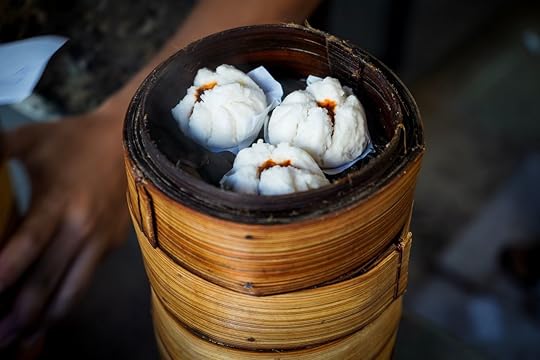
Photo: metita ungsumeth/Shutterstock
Another type of bun that’s essential to Chinese bakeries is char siu bao, or barbecued pork buns. The popular dim sum order consists of steamed buns stuffed with what Cho calls “essentially candied pork.” Both savory and sweet, char siu bao is a perfect example of the salt-sugar balance that backbones many Chinese baked goods and adds to the “magic of Chinese bakeries.” Steamed chicken buns are also sold in many bakeries.
Youtiao
Photo: Yu Xianda/Shutterstock
Youtiao, or Chinese donuts, look like a cross between a churro and a cruller. Often salted, the fried dough sticks are typically served at breakfast alongside jook, a savory rice porridge. Youtiao is also enjoyed plain with milk as a snack, as well as stuffed inside thick logs of sticky rice with pork floss, chili, assorted veggies, and egg in a dish called fan tuan. 
The post This new cookbook spotlights China’s underappreciated baking traditions appeared first on Matador Network.
Best yoga gear for traveling

Traveling can reinvigorate a yoga practice — it can offer the opportunity to flow somewhere new; a chance to connect with fellow yogis at a yoga retreat; or even the challenge of taking your practice off the mat to tap into that inner zen when travel mishaps occur. The benefits of taking your practice on the go are limitless, so here is some of the the best yoga gear for doing just that.
We hope you love our list of the best yoga gear for traveling. Just so you know, Matador may collect a small commission from the links on this page if you decide to purchase. Listed prices are accurate as of the time of publication. See our full Advertiser Disclosure here.
1. A yoga mat bag
Photo: Manduka/REI
A yoga mat carrier is a staple item to keep all of the essentials (your mat, straps, a block, water, snacks, etc.) in one and easily-accessible place. For plane travel, opt for a bag carrier such as this. It holds the mat vertically, rather than horizontally, which will make it easier to slide into an overhead compartment or under a seat.
Price: $35.00
2. Yoga mat cleaner
Photo: Luna Lifestyle
Taking your mat somewhere new means it’s going to be exposed to new elements. Whether it’s salty ocean air, a hotel room floor, or an airport lounge — if you’re putting your bare skin on your mat, you’re going to want it to be as clean as possible. In addition to keeping it clean, a yoga mat spray, like this all-natural lavender option from Luna Lifestyle can have a therapeutic, calming quality (bonus: it comes with a towel).
Price: $8.99
3. Travel-friendly yoga mat, or yoga towel
Photo: Manduka/REI
If you’re low on available real estate in your luggage, a travel-friendly yoga mat will help you save space. There are foldable options, but it’s important to remember that this space-saving alternative does come with a caveat — these mats are thinner than the average yoga mat. If you need a little extra cushion, consider adding a yoga towel on top of your mat. This option from Maduka has silicon backing to prevent slipping.
Price: $58.00
4. Crystals
Photo: Energy Muse/Facebook
Crystals can serve a multitude of purposes — to lay with in savasana for clarity and calming, to place on your mat to feel grounded and connected to the new space you’re practicing in, to meditate with pre or post-practice. It’s easy to feel a little lost when traveling, and the right crystal may be the perfect companion to keep you feeling centered. Check out Energy Muse for a complete collection.
Price: From $24.99
5. Journal
Photo: Roseanne Baker/Amazon
You’re bound to be inspired when you take your practice somewhere new. Traveling with a journal such as this will help you record new perspectives gained from time on and off the mat.
Price: $7.99
6. Palo Santo wood
Photo: semccorm/Shutterstock
When burned, Palo Santo wood can be used to cleanse energy, and its earthy scent has also been said to be quite grounding and calming. Palo Santo is also a great alternative to sage (which can have a very strong scent), and it’s also a bit sturdier, making it easier to travel with.
Price: $12.99
7. Wireless/Bluetooth headphones
Photo: BOSE
Whether you need to tune out surrounding sounds, or you just want to tune into your favorite playlist, bluetooth or wireless headphones can help. With these, you won’t have to worry about being a wire-tangled warrior. Flow in peace, and to whatever sound you like. We recommend these wireless headphones from BOSE.
Price: $179.00
8. Yoga socks/gloves
Photo: Tucketts
If you can’t fit a mat, or a yoga towel into your luggage, consider packing a set of yoga socks or gloves instead. These accessories have grip to help you flow safely and slip-free on any surface. Tucketts offer stability and comfort (there are two different thickness options), and come in a variety of sizes.
Price: $15.97
9. A phone stand/tripod
Photo: Joby
Whether you want to capture that shot of your tree pose in a forest; your strong, grounded mountain pose at the top of a pristine peak; or you just want to tune in to your favorite yoga channels remotely, a portable phone stand can come in handy. This one from Joby is a great all-rounder.
Price: $24.15
10. Meditation App
Photo: Calm/Facebook
Download a meditation app and have a little zen at your fingertips. Apps like Calm and Headspace come free — though some courses are free while others aren’t — and are highly recommended. They also offer guided meditations, which can be extra helpful if you’re struggling to slip into serenity on your own. 
The post 10 must-haves for the traveling yogi appeared first on Matador Network.
September 21, 2021
A rose festival, sheep parade, and 5 other perfect October getaways happening this year

By October, there’s no doubt about it: fall is in full swing. Unfortunately, there are only a few weeks to truly enjoy the peak of this colorful season — and maybe even less depending on where you live. That’s why you need to plan ahead, lest fall pass us by before we have a chance to embrace it. When it comes to seasonal activities, old standbys like leaf peeping and apple picking immediately come to mind, but there are plenty of other ways to enjoy the heart of fall.
From taking a hot air balloon ride in Albuquerque to downing oysters in Seattle, these are the fall experiences you should put on your October travel agenda.
1. The Texas Rose Festival in Tyler, Texas
Photo: Donna Chance Hall/Shutterstock
Spring might seem to have a monopoly on flowers, but in Tyler, Texas, autumn is all about roses. Tyler, 100 miles from Dallas, is often called the Rose Capital of America. This is one mid-sized Texas city that’s not defined by football, steak, or oil, but by roses.
At the start of the 20th century, the town’s thriving peach industry collapsed, and European immigrants introduced roses as an economic replacement. Now it’s home to the largest rose garden in the US, which has more than 38,000 rose plants across 14 acres. Around half of all roses sold in the country come from Tyler. The garden remains in full bloom through November, though if you’re going to visit, you shouldn’t miss October’s Texas Rose Festival.
Taking place October 14 through 17 this year in the massive rose garden, the festival features a parade, an arts and crafts fair, a plant sale, and coronation of a queen. If you can’t make it for the Rose Festival, you can still take advantage of Tyler’s network of hiking and biking trails, Caldwell Zoo, or kayaking on Caddo Lake.
2. A fall beach trip to Nantucket
Photo: Bokic Bojan/Shutterstock
While usually associated with summer, Nantucket is also an island that’s an ideal fall destination. Located 30 miles off the coast of Massachusetts, the island is just 100 square miles and known for its beaches and ritzy summer homes. But there’s more to Nantucket than just the beach — especially in the so-called “off-season” when the island isn’t inundated with tourists.
September to November is actually the best time to visit if you’re the type of person who travels for food. You can get seats at restaurants that are usually booked solid, and fall is harvest season for scallops. Other New England staples like apples, squash, and cranberries are also found in abundance on menus across the island.
Cranberry bogs are perhaps the island’s most underrated attraction. For those in-the-know, it’s a tradition on Nantucket, Martha’s Vineyard, and Cape Cod to visit the cranberry bogs during fall to watch the harvest. Windswept Bog on Stump Pond, for example, has 231 acres of retired cranberry bogs, hardwood forests, and ponds, as well as miles of scenic walking trails. Milestone Bog, in the heart of the island, has been the epicenter of cranberry farming on Nantucket for the past 150 years, and visitors can enjoy views of the surrounding rolling hills and grasslands.
3. Leaf-peeping and beer in Portland, Maine
Photo: Sean Pavone/Shutterstock
For the best fall foliage experience in New England, you’d probably have to forge deep into the woods of Maine and spend the weekend in a tent. If that’s your level of commitment, go for it. If you’d prefer a more accessible foliage experience with more than just leaves on the agenda, head to Portland.
Portland is a great base for a leaf-peeping excursion. Since it’s the last major town for hours, it’s the perfect place to set up shop and head north for a day of sightseeing through Maine’s smaller, more rural communities. There’s also plenty of foliage throughout the city itself. You can walk the tree-lined Eastern Promenade, a waterfront trail built along an old rail corridor, or climb atop the Portland Observatory for views of the ocean and surrounding landscape.
Portland is also known for its craft beer scene. From Allagash to Austin Street Brewery to Goodfire Brewing, the city’s breweries all serve up world-class seasonal beverages that are particularly enticing on a brisk fall day.
4. The Trailing of the Sheep Festival in Sun Valley, Idaho
Photo: Trailing of the Sheep/Facebook
While Spain has its annual Running of the Bulls in Pamplona, and Sun Valley has its beloved Trailing of the Sheep Festival. Okay, the comparisons end there, but running with the sheep is a hell of a lot safer than running with the bulls.
The festival, which dates back to 1996, is rooted in the tradition of trailing the sheep to minimize conflicts between the sheep and users of the path. With the aim of preserving the stories and history of sheep ranchers, the festival has evolved to include family events like live performances, storytelling, a sheep cooking class, and the Big Sheep Parade featuring more than 1,500 sheep. This year the festival is taking place October 6 through 10, and you can sponsor a sheep if you really want to get involved.
If you don’t go for the sheep in October, you can still go for the 400 miles of mountain biking trails throughout the valley, or the scenic hike up Bald Mountain. There’s also horseback riding against a Hollywood-esque Western backdrop for those who truly want to embrace their inner John Wayne.
5. The National Apple Harvest Festival in Biglerville, Pennsylvania
Photo: goszczal/Shutterstock
Comparing Biglerville to any other town in Pennsylvania would be like comparing apples to oranges. It might not be the Big Apple, but it’s certainly the apple of many local residents’ eyes. If the apple references haven’t made it painfully obvious by now, Biglerville is known for its apple tradition, and it wears that tradition on its sleeve.
Located in the heart of Pennsylvania’s apple country, the town of just 1,200 people is home to the National Apple Harvest Festival, held every October. This year, the festival is taking place on the first and second weekends of October. The event is a true celebration of fall, with a full lineup of live music, homemade fall foods, handcrafts, and your favorite apple celebrities like Johnny Appleseed. And when you’re taking a break from the festival itself you can always hit up the National Apple Museum, which is open from May through October.
To fully appreciate Biglerville, you really do need to be into apples. Or applesauce at the bare minimum. However, those who prefer wine to apples will also feel welcome here. The town is home to Boyer Cellars, a winery tasting room with both indoor and outdoor seating. Here, you can enjoy a variety of traditional wines, sparkling wines, and hard ciders in a tasting room with views of the (what else?) apple orchard.
6. The International Balloon Fiesta in Albuquerque, New Mexico
Photo: gmeland/Shutterstock
New Mexico doesn’t exactly wrap its visitors in fall colors like New England does, but it does offer a colorful sightseeing experience of another variety. Instead of looking around at all the changing leaves, visitors to Albuquerque in October might find themselves looking around at the colorful balloons dotting the sky above.
The Albuquerque International Balloon Fiesta takes place October 2 through 10, and features hundreds of balloons that soar over the Rio Grande Valley. Picture a Macy’s Day Thanksgiving Parade of quirky characters, but all in balloon form. The biggest hot air balloon festival in the world includes a Balloon Glow, when grounded balloons are all lit up, an AfterGlow Fireworks Show, and a balloon rodeo spotlighting the most inventive designs. There are also concerts, dance performances, and a chainsaw carving demonstration, and, of course, balloon rides for those who didn’t BYOB (Bring Your Own Balloon).
If the views from a hot air balloon don’t cut it for you, check out the Sandia Peak Aerial Tramway, which ascends over 10,000 feet to the peak of the Sandia Mountains, where you’ll have panoramic views of the surrounding desert. You could also just stay grounded and hike or bike the Sandia foothills, or stroll through the city’s historic Old Town.
7. Stargaze in Gunnison, Colorado
Photo: SNEHIT PHOTO/Shutterstock
Stargazing is one of those activities you really have to take advantage of before it’s too late in the season. Yeah, the night sky is beautiful year-round, but no one wants to sit outside at 2 AM in January trying to glimpse the Milky Way before they freeze to death. That’s why you should squeeze your stargazing trip in during fall.
Colorado is known for its breathtaking skies and low light pollution, and Gunnison is probably the best place to stargaze in the state. Located in the heart of Gunnison Valley, Gunnison is home to the Hartman Rocks Recreation Area, which has a desert landscape that’s ideal for night-sky viewing. There are several hiking trails here perfect for an evening hike, and campsites where you can set up a tent and gaze upwards all night. Black Canyon of the Gunnison National Park is another scenic area, and it’s known for its steep Precambrian rock canyon that any visitor — stargazer or not — should be sure to check out.
The best way to explore the area is probably by taking the West Elk Loop, a scenic byway that passes through Gunnison, Crested Butte, Paonia, and other Colorado mountain towns. The Gunnison River is the epicenter of outdoor recreation in Gunnison, flowing right through town with class I and II rapids. You can float down the river for a leisurely afternoon, or have a more intense rafting experience. There’s also a whitewater park for even larger rapids. 
The post A rose festival, sheep parade, and 5 other perfect October getaways happening this year appeared first on Matador Network.
Matador Network's Blog
- Matador Network's profile
- 6 followers



